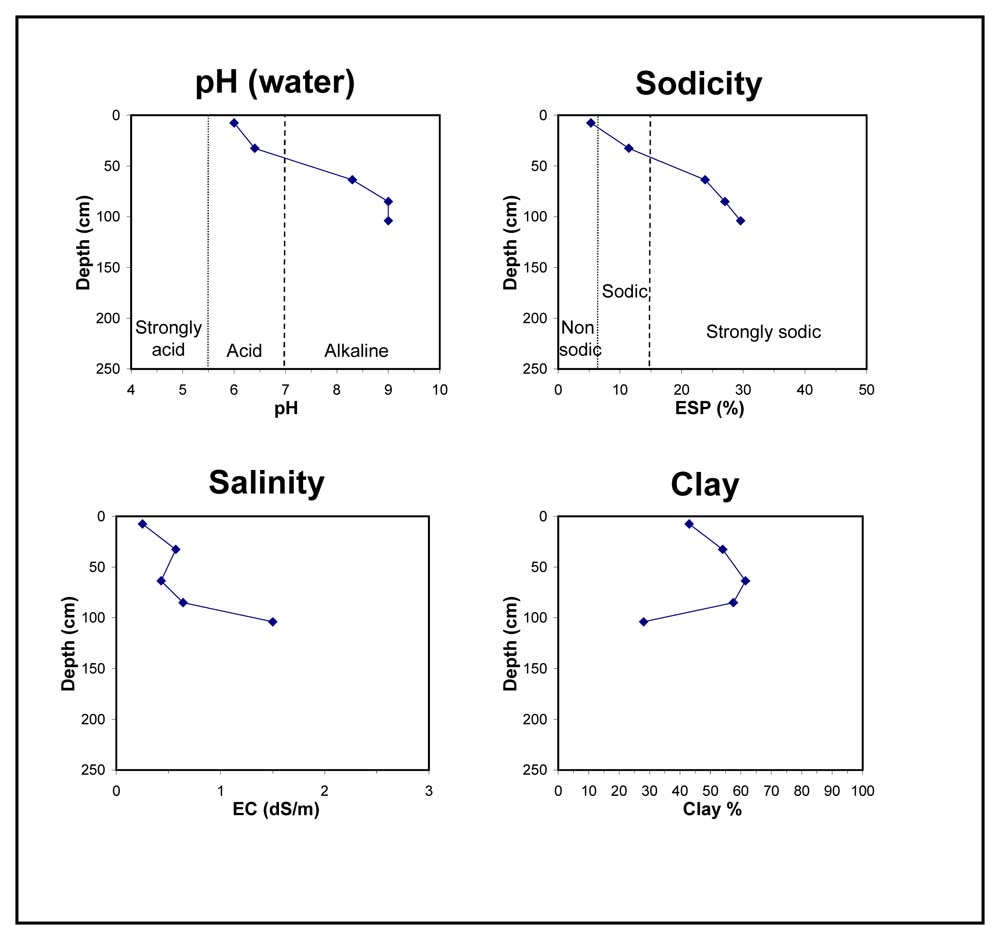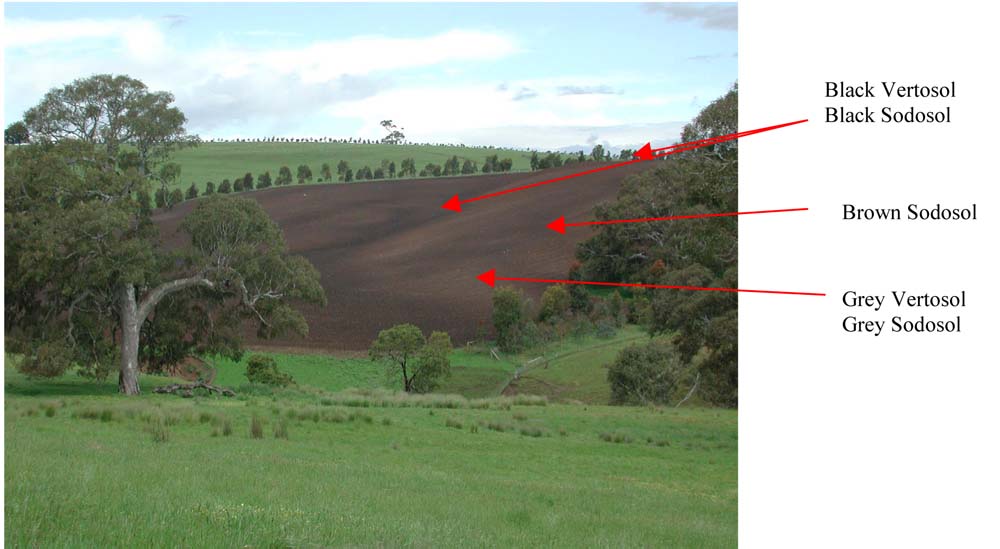GL110
| Site: GL110 | Land Unit: Merino Tablelands |
| Aust. Soil Class.: Episodic, Epipedal, Grey VERTOSOL (confidence level 1) | |
| General Land Unit Description: This unit consists of the Cretaceous non-marine sandstone of the dissected Merino Tablelands. The tablelands were thought to have formed under swamp conditions and a warm climate. As a result, the soils tend to be high in clay and there tends to be carbon rich seams of charcoal deposits at depth in some of the profiles. The main soil type used to represent this land unit is black cracking clays (Vertosols) that can be sodic at depth. This soil type, along with Black Sodosols, Chromosols and Dermosols, are commonly found in the broad crests or drainage lines. The slopes often consist of Brown Chromosols, Sodosols or Dermosols, although black soils can also occur on the slopes. The lower slopes commonly have Grey Vertosols or Sodosols as the major soil type. The reasonably deep sodic soils on short steep slopes tend to be prone to landslips. The grey soils, in particular are prone to water erosion. |
Site Description:
| Slope: 1% | Geology: Cretaceous non-marine sandstone |
| Landform pattern: Rolling rises and undulating low hills | Position in landscape: Upper slope |
| Internal drainage: Imperfectly drained |
Soil Profile Morphology
| A1 | 0-15 cm | Black (10YR2/1) light clay, strong subangular blocky structure (5-10 mm), firm consistence when dry, pH 6.0; clear transition to: |
| Subsoil | ||
| B21 | 15-50 cm | Very dark brown (10YR2/1), medium heavy clay, strong lenticular structure (20-50 mm), strong consistence when dry to moderately moist, pH 6.4; gradual transition to: |
| B22 | 50-70 cm | Black (10YR2/1), heavy clay, strong subangular blocky structure (2-5 mm), strong consistence when moderately moist, pH 8.3; gradual transition to: |
| B23 | 70-85 cm | Dark greyish brown (10YR4/2), heavy clay, strong subangular blocky structure (2-5 mm), strong consistence when moderately moist, pH 9.0; transition to: |
| B3 | 85-115 cm | Brown (10YR4/3), medium clay, fine sandy, medium subangular blocky structure (5-10 mm), strong consistence when moderately moist, pH 9.0; transition to: |
| C | 115-200 cm | Light olive brown (2.5Y5/3), sand, massive structure, loose consistence when dry. |
Key profile features:
- Alkaline subsoil
- Sodic subsoil
- Topsoil dispersive when worked when wet
- Subsoil dispersive when dry





